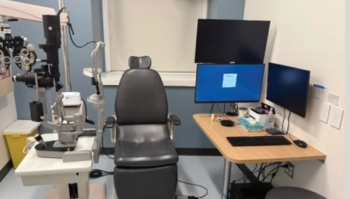
Should fixed combinations be given as first-line glaucoma therapy? NO
We should not be adding another drug to the therapeutic mix without having established the efficacy and side effect profile of a single therapy.
Key Points
According to the guidelines of the European Glaucoma Society (EGS), the least amount of medication (and consequent inconvenience, costs and side effects) to achieve the targeted therapeutic response should be a consistent goal.1 As such, the European body recommends the administration of monotherapy as the first-line strategy in the treatment of glaucoma and, in line with these recommendations, I adopt this approach in my own patients. I do this because of the current guidelines, but also because I believe that it is important to assess the efficacy and the side effects of a single ingredient in each patient before considering the addition of a second therapy or its substitution for another.
In terms of the choice of drug therapy, this depends on the ophthalmologist's preference; however, a shift in prescribing trends from beta-blockers to prostaglandins / prostamides has been evident over the last few years. To start therapy I most commonly administer either a beta-blocker (timolol), particularly in my younger patients, or a prostaglandin/prostamide.
Test one ingredient first
I admit that a combination treatment strategy is necessary in most glaucoma cases for the adequate long-term control of IOP; however, I will not initiate my patients on this form of therapy. As a general rule, I administer monotherapy to my glaucoma patients. If the therapy is not efficacious, I will consider switching to another monotherapy. If, however, an IOP lowering effect is evident and of the expected magnitude, though the target IOP is not achieved, I will then add a second molecule. If the two molecules are available in a fixed combination, I will opt for this, otherwise, as a last resort, I will administer an unfixed combination of the two molecules.
Is the future fixed?
To my knowledge, fixed combination therapy is not inferior to unfixed combination therapy in terms of efficacy, however it does have several distinct advantages, primarily relating to compliance, tolerance, side effect profile and, ultimately, quality of life. For long-term administration, fixed combinations are certainly the preferred option.
I believe in the future we will see more fixed combination therapeutics entering the market. With clinical investigations of new preparations currently underway, I wait with interest to see the clinical data presented. Where these therapeutics will fit into glaucoma specialists' overall therapeutic strategy in the future is still uncertain; however, the efficacy of the new combinations is expected to be high. For now, my strategy will continue to involve the administration of monotherapy as first-line treatment to my glaucoma patients. I have no reason to change my approach just yet.
---
To read Professor Anastasios Konstas's counter-argument, please go to
---
References
1. European Glaucoma Society. Terminology and Guidelines for Glaucoma. 3rd Edition. DOGMA srl; 2008.
Newsletter
Get the essential updates shaping the future of pharma manufacturing and compliance—subscribe today to Pharmaceutical Technology and never miss a breakthrough.










































